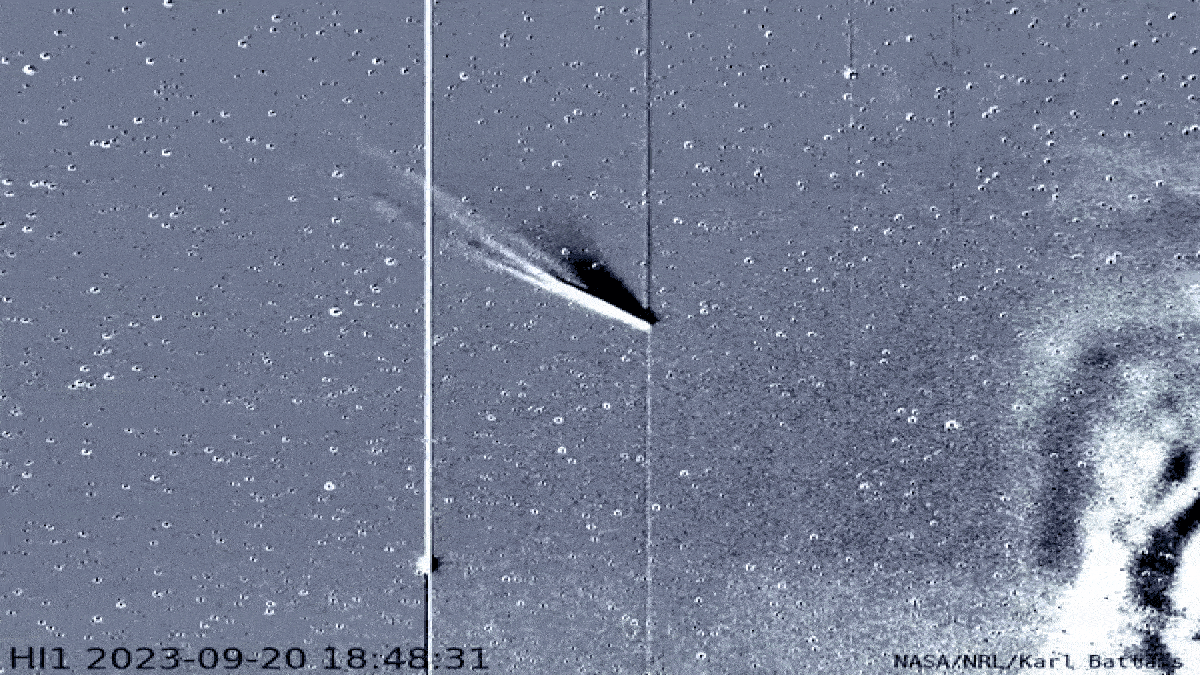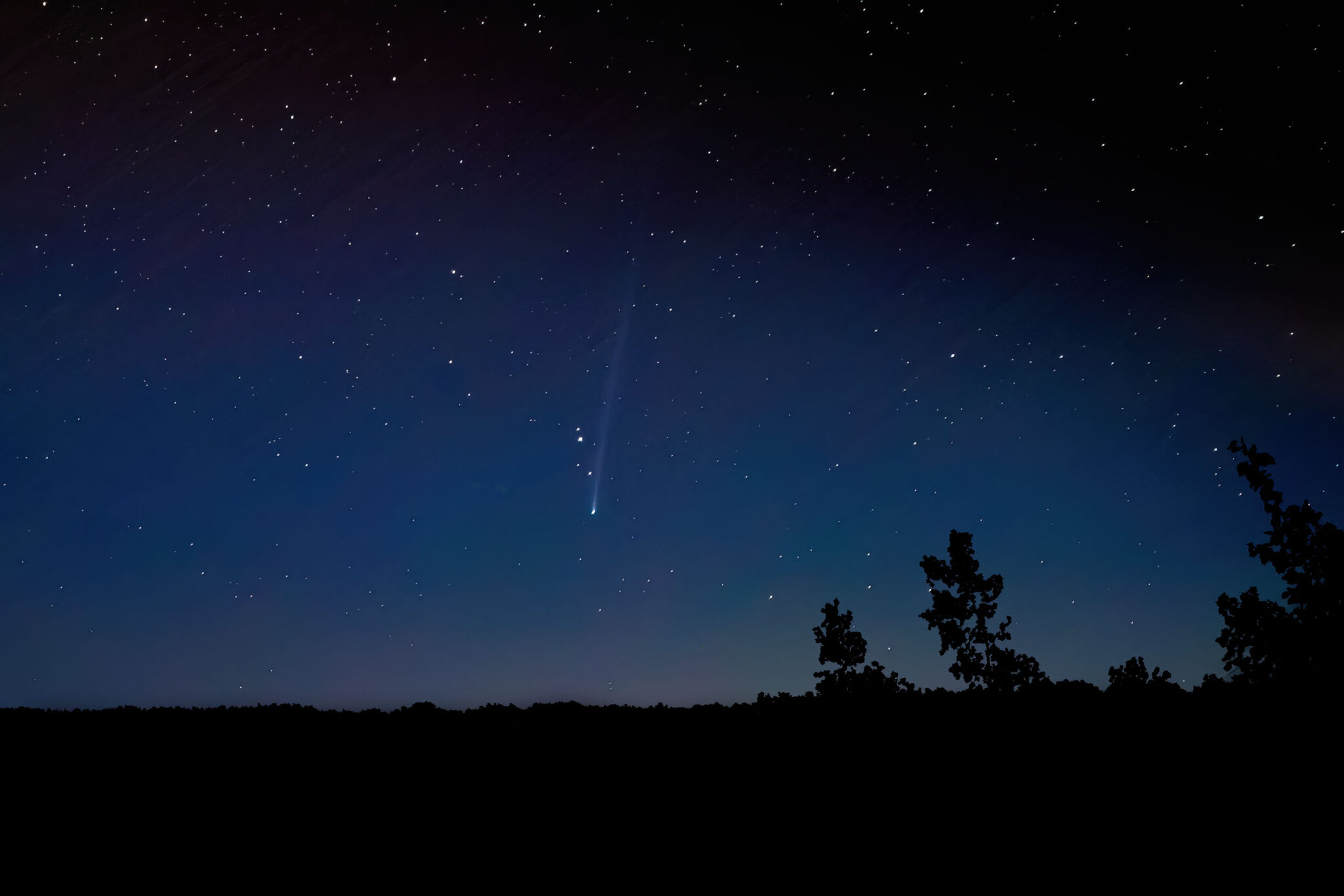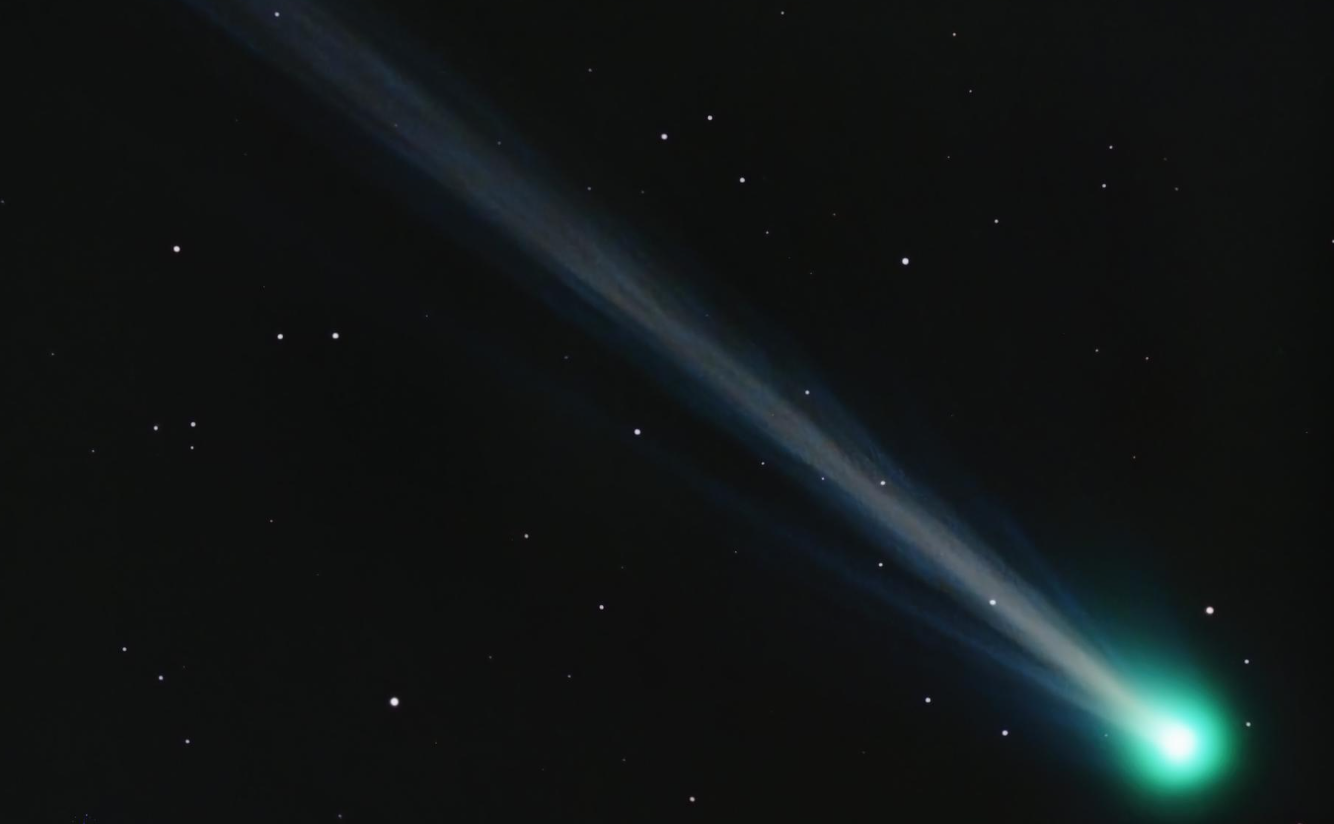The recently discovered green comet Nishimura has become an object of close observation by astronomers. These observations became especially interesting after it underwent an unexpected event — a collision with a coronal mass ejection on the Sun during perihelion. The event struck everyone with its strangeness and the effects that remained on the camera of the NASA spacecraft.

On satellite images obtained from the STEREO-A spacecraft, you can see how a plasma plume hits Nishimura, “pushing” its tail — a thick stream of dust and gas that is formed during the comet’s approach to the Sun. This was told by an astrophysicist from the US Naval Research Laboratory, Karl Battams, who created a video recording of this incredible phenomenon.
Discovery of Comet Nishimura
First, comet Nishimura, known as C/2023 P1, was noticed by Japanese amateur astronomer Hideo Nishimura on August 12, when it was rapidly heading towards the Sun. Its rapid trajectory first aroused interest, possibly belonging to an interstellar object similar to Oumuamua or comet 2I/Borisov. However, further observations revealed that the comet originated from the Oort Cloud, a region beyond Neptune’s orbit. It has an orbit that directs it to the inner Solar System approximately every 435 years.

On September 12, 2023, the comet reached its closest point to Earth, at a distance of about 125 million kilometers from Earth. For several September days, the comet could be clearly seen at the horizon before sunrise and after sunset. Astronomers from all over the world observed the comet, creating spectacular photos of this icy object. Some of these images demonstrate how the comet emits a green glow due to the high concentration of carbon dioxide in a cloud of gas and dust known as a coma.
Tail Separation
On September 17, the comet reached the minimum distance from the Sun, known as perihelion, flying around our star at a distance of approximately 33 million kilometers. Usually such a close distance leads to the destruction of comets, but this time Nishimura survived this maneuver and extremely high temperatures.

When comet Nishimura began to move away from the Sun, it passed in front of the STEREO-A cameras. And soon, on September 22, a coronal mass ejection occurred on the Sun. This led to a separation event when the CME tore off the tail of the comet. Karl Battams noted that this effect was temporary and absolutely safe for the comet. After separation, the tail will begin to “grow back”.
Comet’s return in 435 years
This isn’t the first time Comet Nishimura has lost its tail. Earlier in September, it was affected by two outbursts that caused at least one separation event. But despite constant exposure to the Sun, the comet remains on its flight path through the Solar System.
However, the comet has begun to move away from the Sun and the Earth and is returning to the cold edges of the Solar System to the Oort Cloud. Already this month, Nishimura will cease to be visible to the naked eye. If nothing happens to it on its turbulent path, it is very likely that in a few centuries we will again be able to enjoy its incredible beauty when it flies past our planet.
Earlier we talked about how scientists found out about the approach of a comet.
According to Space
Follow us on Twitter to get the most interesting space news in time
https://twitter.com/ust_magazine
